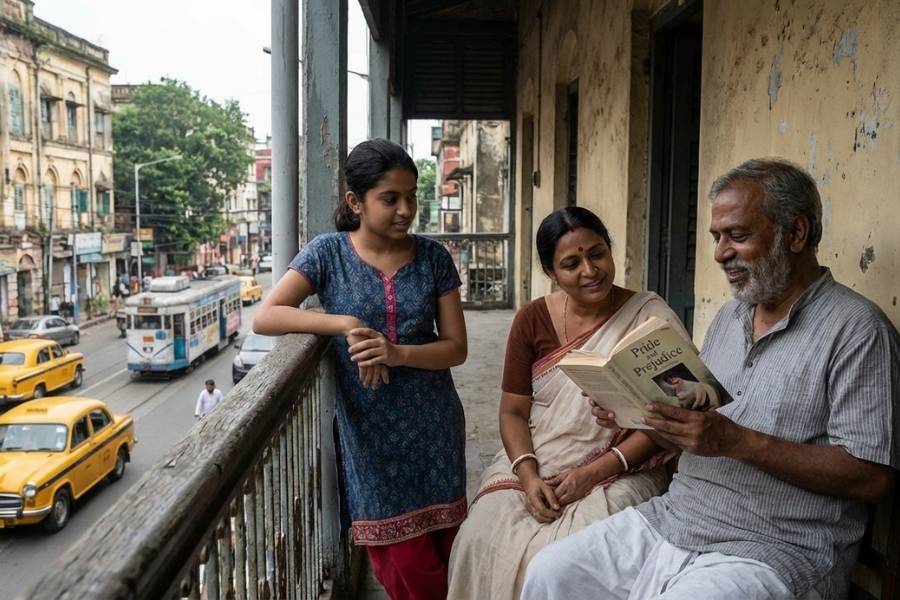 |
| A stove in a farmer’s house that runs on biogas. Telegraph picture |
Jorhat, Dec. 14: The agri-engineering department of Assam Agricultural University has designed a biogas plant which will address both the needs of renewable energy sources and organic farming in a more effective manner.
The department has also produced fuel from poultry litter in the same plant but the process is still under trial.
Manas Barooah, an agri-engineer of the department, said the plant devised used solid dung instead of diluted dung and generated upto 30 per cent more gas than the common design.
“Cowdung is usually found to be 18 per cent in the solid state and has to be diluted to about 8 to 9 per cent before being used in a plant. We have modified the system so that methane, the gas formed by decomposition of the waste, can take place when the dung is not diluted to that extent but is in the solid state of 15 or 16 per cent,” Barooah said.
The advantage of this system is that not only does it give more energy for cooking and lighting but in the Northeast states where rainfall is heavy, the slurry (leftover matter), too, is comparatively in a more solid state and dries quickly allowing for quicker application in fields. Barooah said as dilution of the solid waste was less, less water was required and feeding into the plant was easier.
Moreover, the paste-like digested slurry that dried within a week required much less space for drying and less labour for handling. The cost of construction was also the same.
“In an average household of five to eight members, the amount of dung required per day is about 50kg. The required dung can be acquired from five to six cattle heads and used in two to three cubic metre-sized biogas plant for cooking,” he said.
In regard to production of fuel from poultry litter, Barooah said the method used for housing poultry here was that the litter was mixed up with a lot of other materials and had to be separated before it could be used in the plant.
“Here we call it deep litter where all the poultry is housed together. A bed of sand and paddy husk is laid on the floor of the cages and the litter feeds together from one large bowl kept in the middle. This is unlike other developed states where they are kept individually in cages and feed from separate feeding bowls. Here, at first, the litter has to be separated from the husk by washing before being fed into the plant. This precaution is taken because even a small amount of husk which contains silica and is non-biodegradable can choke the plant,” Barooah said.
The research-engineer said the next process was to adapt the micro-organism that ferments the dung and produces gas, to the high acidic nature of poultry litter so that the same kind of fermentation takes place.
“Small amounts are mixed in everyday so that the micro-organism can adapt to the acidic nature of poultry litter and the entire process takes about 18 weeks before the biogas plant can be entirely fed with litter,” he said.











